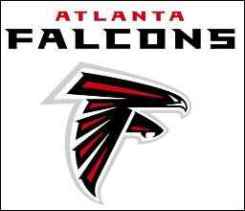By Kevin Chen
The New York Subway system is one of the best subway systems in the world for several different reasons. It is very accessible, inexpensive, and very practical and economical. It is one of the busiest and most used subway systems around the world. Right now, it is fourth in number of riders per year with 1.604 billion riders a year, behind only the Tokyo Subway in Japan, Moscow Subway in Russia, and the Seoul Subway in South Korea. I am a veteran of the subway system with hundreds of rides under my belt. I can honestly say that without the subway in New York City, the streets would be packed with pedestrians and the roads would be even more congested than they already are. Therefore, the subway in New York City is probably the city’s most important financial and land resource investment in its illustrious history.
 A packed subway car in New York City.
A packed subway car in New York City.
Accessibility is one of the system’s most important and valued characteristics. The system now has a total of 468 stations all over the city of New York. On tracks in and between those stations, there are over 6,000 total subway cars. That makes it the largest subway car fleet in the entire world. The stations cover almost all of the five boroughs of the city, and there realistically isn’t a place in a city that isn’t within reasonable walking distance to a subway station. The busiest stations in the systems are around the midtown area. The 42nd street Times Square station is the busiest of the lot with over 58 million riders using the station.
 A sign for 42nd Street station. The station has transfers for 12 different subway lines.
A sign for 42nd Street station. The station has transfers for 12 different subway lines.
A ride today would cost you $2.25, which seems like a lot. However, many people don’t realize just how far the subway can take you. With a transfer, a person could travel 38 miles with one fare. Basically, you can get from one side of the city to the other for $2.25. One could argue that the gas mileage is cheaper than the ride fare if the trip isn’t too far. However, traffic and parking also need to be taken into account. Driving in the city not only loses you time because of the constant traffic in the streets; it loses you extra money because more often than not, a driver needs to pay for his or her parking. Driving in the city is a pain in the behind, literally and metaphorically. One’s behind is bound to get sore after sitting in traffic for an extended period of time. Also, they’re inevitably going to get frustrated with the lack of and the expense of parking, abundance of jaywalkers and bicyclists, and the overall congestion of major streets and intersections.
 Typical NYC traffic.
Typical NYC traffic.
Therefore, taking the subway to get around New York City from place to place is a great way to go. Unless you need a vehicle to transport something around, there is almost no reason a person shouldn’t take the subway. It is better than driving a car around a city in almost every imaginable way. Additionally, the emissions from cars are even worse in the city due to all the time waiting and sitting idle in the car. Sitting idle at a light, waiting for it to change does not mean that your car isn’t still harming the environment by letting out toxic emissions from its exhaust pipes. On the other hand, if you use the subway, you are using electric power to get yourself around. You are not harming the environment by releasing harmful emissions into the atmosphere. Even though this is a pretty general idea that can apply to any subway system in the world, the one in New York is specifically efficient and economical because there are simply a plethora of cars on the streets and the emission and pollution problem would be exponentially worse than a city that isn’t nearly as crowded.
 A car exhaust pipe expelling harmful emissions.
A car exhaust pipe expelling harmful emissions.
All in all, in order to have a successful transportation system, it must be accessible, not too expensive, safe, and generally clean. This subway system does most of those things very well, so it qualifies as a great public transportation system. Clearly, the New York Subway system is a great example of how a public transportation system should work. It’s affordable, efficient, accessible, and friendlier to the environment. In the contrary, Marta isn’t a great public transportation system yet. There are several different problems that have compelled some people to believe that the future of the Marta system is grim. Some of these problems include limited accessibility, racial barriers, and the lack of funding from the state. However, if Marta takes action and strives to be more like the public transportation system in New York, its future definitely won’t be grim.
 A street entrance to the one of the best subway systems in the world.
A street entrance to the one of the best subway systems in the world.
There are seemingly endless good things to mention about the NYC subway system. How about the negatives or cons of the NYC system? Fortunately, there are only a few minor drawbacks. One of them lies in taking the subway around is the security, or lack thereof. Another issue with public transportation is that is isn’t as clean and sanitary as a car sometimes. There are some subway systems around the world that do a pretty good job with sanitation and cleanliness, but the NYC subway is most definitely not on that list. Some of the stations are pretty bad; there is raw sewage between the tracks and once in a while, you see a rat making its way through the station. Others, such as 59th street station and 42nd street station, are pretty clean. The MTA (metro transportation authority) has taken action to try and clean some of the dirty stations. Also, they have taken steps to improve the experience of the rider: they have put signs up with train arrival times, they have upgraded some of the really old train lines such as the E line, and they have built people-friendly machines that sell metrocards and single fare tickets.
 A graffiti covered NYC subway car.
A graffiti covered NYC subway car.
Every public transportation should strive to be similarly to the NYC system in the areas of accessibility, practicality, and economic sustainability. If Marta took a few steps to expand and develop Marta into a system similar to the one in New York, there will definitely be more passengers per year and its situation would not be as bad as it is today. This is obviously easier said than done, but if small steps are taken over a period of time, it can be accomplished.
Works Cited –
42ndstreetsign. Image. http://30.media.tumblr.com/tumblr_ktyw4qcImR1qzhmoco1_500.jpg. Web. 25
Sep 2011.
Carexhaust. Image. http://www.ngkeurope.com/typo3temp/pics/5766451707.jpg. Web. 25 Sep 2011.
Metropolitan Transit Authority. Mta.info|Facts and Figures. http://www.mta.info/nyct/facts/ffsubway
.html. MTA. 25 Sep 2011.
Nycsubway. Image. http://cdn.berryreview.com/wp-content/uploads/2007/10/nycsubway.jpg.
Web. 25 Sep 2011.
Nycsubwayhistory. Image. http://blog.defgrip.net/wpcontent/uploads/2010/10/nycsubwayhistory12.jpg
Web. 25 Sep 2011.
Subwaylarge. Image. http://i.huffpost.com/gen/103118/thumbs/s-SUBWAY-large.jpg. Web. 25
Sep 2011.
 MARTA stops on many education services as well. Just to name a few, MARTA has stops in Georgia Institute of Technology, Georgia State University, Oglethorpe University, University of Georgia (transferring to Southeastern Stages), and Emory University. Figuratively, the number of students who attend Georgia Institute of Technology, Georgia State University, Emory University, and University of Georgia combined is 100,286 students. Also, including employees and faculties of these institutions will make this figure greater. This means that over a hundred thousand of students can commute to their schools by using MARTA.
MARTA stops on many education services as well. Just to name a few, MARTA has stops in Georgia Institute of Technology, Georgia State University, Oglethorpe University, University of Georgia (transferring to Southeastern Stages), and Emory University. Figuratively, the number of students who attend Georgia Institute of Technology, Georgia State University, Emory University, and University of Georgia combined is 100,286 students. Also, including employees and faculties of these institutions will make this figure greater. This means that over a hundred thousand of students can commute to their schools by using MARTA.
















 *
*